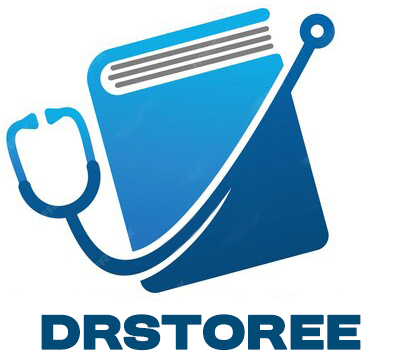Cardiac Positron Emission Tomography (PET) imaging has emerged as a pivotal tool in the evaluation of cardiovascular conditions, offering superior diagnostic accuracy and depth of detail compared to traditional imaging modalities. The American Society of Nuclear Cardiology (ASNC) plays a crucial role in advancing this field by setting educational standards and guidelines. The ASNC Cardiac PET Curriculum 2023 represents a significant milestone in this regard, reflecting the latest advancements and best practices in cardiac PET imaging.
Evolution of Cardiac PET Imaging
Cardiac PET imaging utilizes radiotracers to visualize and quantify physiological processes in the heart, such as myocardial perfusion and metabolism. Over the years, advancements in PET technology and radiopharmaceuticals have significantly enhanced its clinical applications, from assessing coronary artery disease (CAD) to evaluating myocardial viability.
Historically, the evolution of cardiac PET has been marked by improvements in image resolution, quantification techniques, and the development of novel radiotracers. The introduction of dynamic PET imaging and advanced reconstruction algorithms has further refined the accuracy of cardiac PET assessments, making it an invaluable tool in contemporary cardiology.
The ASNC Cardiac PET Curriculum 2023: Objectives and Structure
The ASNC Cardiac PET Curriculum 2023 aims to provide a comprehensive framework for education and training in cardiac PET imaging. It is designed for both new and experienced practitioners, including nuclear medicine physicians, cardiologists, and radiologists. The curriculum is structured to cover a broad range of topics essential for proficiency in cardiac PET imaging.
https://medical-amboss.com/product/asnc-cardiac-pet-curriculum-2023/
1. Foundations of Cardiac PET Imaging
The curriculum begins with an overview of the fundamental principles of PET imaging, including the physics of positron emission and the principles behind radiotracer development. It provides insights into the various types of radiotracers used in cardiac PET, such as ^18F-FDG for metabolic imaging and ^82Rb for myocardial perfusion imaging. Understanding these fundamentals is crucial for interpreting PET scans accurately and effectively.
2. Clinical Applications and Protocols
A significant portion of the curriculum is dedicated to the clinical applications of cardiac PET. It covers the use of cardiac PET in diagnosing and managing coronary artery disease, assessing myocardial viability, and evaluating cardiac function. Detailed protocols for various imaging procedures are provided, including stress testing protocols, image acquisition techniques, and post-processing methods.
3. Image Interpretation and Quality Assurance
Accurate interpretation of cardiac PET images is critical for effective patient management. The curriculum emphasizes image analysis techniques, including the assessment of myocardial perfusion, metabolism, and function. It also addresses quality assurance measures to ensure the reliability and reproducibility of PET scans, highlighting common artifacts and strategies to mitigate them.
4. Emerging Technologies and Research
The ASNC Cardiac PET Curriculum 2023 includes a section on emerging technologies and ongoing research in the field of cardiac PET imaging. This includes advancements in radiotracer development, innovations in PET technology, and new research findings that may impact clinical practice. Staying abreast of these developments is essential for practitioners aiming to integrate the latest advancements into their practice.
5. Practical Considerations and Case Studies
To bridge the gap between theory and practice, the curriculum incorporates practical considerations and real-world case studies. This section provides insights into the implementation of cardiac PET imaging in diverse clinical scenarios, offering examples of challenging cases and solutions. It also discusses patient management strategies and interdisciplinary collaboration to optimize patient outcomes.
Impact on Clinical Practice
The ASNC Cardiac PET Curriculum 2023 is designed to enhance the knowledge and skills of healthcare professionals involved in cardiac PET imaging. By providing a structured and up-to-date educational framework, the curriculum aims to improve the accuracy of cardiac PET assessments and ensure high standards of patient care.
Practitioners who engage with the curriculum will benefit from a deeper understanding of the latest techniques and technologies in cardiac PET imaging. This, in turn, will contribute to more precise diagnoses, better patient management, and improved outcomes for individuals with cardiovascular conditions.
Future Directions
As cardiac PET imaging continues to evolve, ongoing education and training will be essential for keeping pace with new developments. The ASNC Cardiac PET Curriculum 2023 represents a forward-looking approach to education in this dynamic field. Future iterations of the curriculum are likely to incorporate new radiotracers, advanced imaging technologies, and updated clinical guidelines based on emerging research.
Additionally, the integration of artificial intelligence and machine learning in cardiac PET imaging is expected to play a significant role in enhancing diagnostic accuracy and efficiency. Continued research and innovation will shape the future of cardiac PET imaging, and educational frameworks like the ASNC Cardiac PET Curriculum will be pivotal in preparing practitioners for these advancements.
The ASNC Cardiac PET Curriculum 2023 stands as a testament to the ongoing commitment to excellence in cardiac imaging. By offering a comprehensive and up-to-date educational framework, the curriculum supports healthcare professionals in delivering high-quality care and advancing the field of cardiac PET imaging. As technology and research continue to drive progress in this area, the curriculum will play a crucial role in ensuring that practitioners are equipped with the knowledge and skills needed to harness the full potential of cardiac PET imaging.
The curriculum not only reflects the current state of the art but also sets the stage for future advancements in cardiac PET imaging. Through continued education and innovation, the ASNC Cardiac PET Curriculum 2023 will contribute to better patient outcomes and the continued evolution of cardiovascular care.
